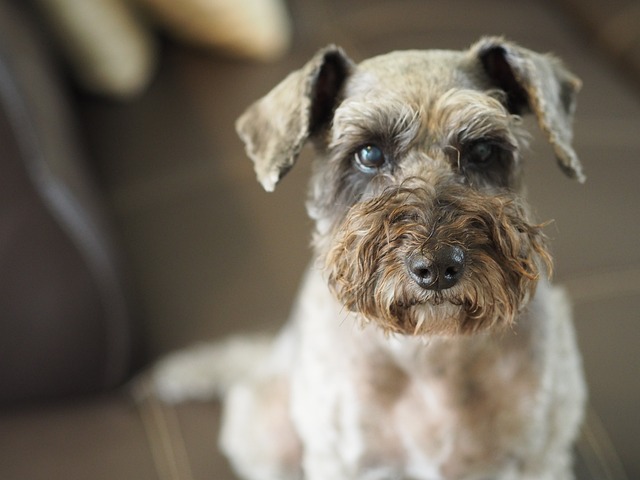
What is glaucoma in a dog?
You might notice your dog squinting more at mealtime or avoiding bright sunlight—these small changes could be early signs of a serious eye condition.
As a Schnauzer owner, the threat of parvovirus—a highly contagious, life-threatening disease—can feel overwhelming, especially given these dogs’ curious, exploratory nature. But with a blend of veterinary science, proactive habits, and compassionate care, you can create a protective shield for your furry companion. Let’s explore practical strategies rooted in Western animal welfare standards and responsible ownership, designed to keep your Schnauzer safe without sacrificing their joy for life.
Vaccination is the foundation of parvo defense, non-negotiable for puppies and adults alike. In most European and North American countries, core vaccines including parvovirus are standard starting at 6–8 weeks, with boosters every 3–4 weeks until 16–20 weeks to ensure immunity builds as maternal antibodies wane. Adult Schnauzers need regular boosters to maintain protection, with schedules tailored by your vet based on local disease risk and lifestyle. Always work with a licensed veterinarian for vaccinations: beyond safety, many regions legally require proof of vaccination for activities like boarding or visiting dog parks, and skipping doses violates animal welfare guidelines that prioritize basic health care.
Parvovirus survives in the environment for months, making meticulous hygiene crucial. When out, avoid areas with visible dog waste—carry unvaccinated puppies to prevent ground contact, a common infection route. At home, disinfect frequently using parvovirus-killing cleaners (bleach-based solutions work but must be rinsed thoroughly to protect paws). Wash bedding, toys, and bowls weekly in hot water, and avoid sharing items between pets. After vet visits or exposure to public spaces, change clothes and wash hands before interacting with your dog to avoid tracking in the virus.
 Socialization is key to a Schnauzer’s well-being, but timing matters. Wait until puppies complete their full vaccine series (around 16 weeks) before introducing them to dog parks or unvaccinated dogs. For adults, avoid communal water bowls in public areas and rinse paws with gentle soap after walks to remove potential viral particles. In dog-friendly settings, use a portable water bowl and towel to minimize shared surface contact—a common practice in Western countries where pet hygiene is prioritized.
Socialization is key to a Schnauzer’s well-being, but timing matters. Wait until puppies complete their full vaccine series (around 16 weeks) before introducing them to dog parks or unvaccinated dogs. For adults, avoid communal water bowls in public areas and rinse paws with gentle soap after walks to remove potential viral particles. In dog-friendly settings, use a portable water bowl and towel to minimize shared surface contact—a common practice in Western countries where pet hygiene is prioritized.
Nutrition plays a vital role in immune resilience. Feed a high-quality diet rich in animal protein, antioxidants, and essential fats to support gut health, as parvo targets the intestinal lining. Choose breed-appropriate formulas free of artificial additives, following Western nutritional guidelines that emphasize biologically suitable ingredients. Probiotics may aid gut health, but consult your vet before adding supplements, especially where pet food regulations are strict. Proper weaning for puppies and stress-free feeding routines further bolster immunity.
Early detection is critical, as parvo progresses rapidly. Watch for subtle signs like loss of appetite, lethargy, or fever, which can quickly escalate to severe vomiting, bloody diarrhea, and dehydration—life-threatening in young puppies. If these symptoms appear, isolate your dog immediately and seek emergency veterinary care within hours. Early treatment with IV fluids and supportive care significantly improves survival rates; don’t wait for advanced signs, especially if your dog has been in high-risk environments.
Preventing parvo is a community effort. Always clean up after your dog in public spaces using biodegradable bags, and advocate for vaccination compliance among fellow owners. Kennels and groomers must follow strict hygiene protocols as mandated by local health codes to prevent outbreaks, reflecting the Western value of shared responsibility for pet health.
Caring for a Schnauzer means balancing their playful spirit with proactive protection. Work closely with your vet to create a personalized plan that includes vaccinations, hygiene, and nutrition, all while staying compliant with regional regulations. Every precaution—a timely vaccine, a careful walk, or a clean environment—adds up to a lifetime of health for your companion.
Your Schnauzer’s vibrant energy and unique charm deserve a life free from preventable diseases. By combining science with compassion, you’re not just preventing parvo; you’re nurturing a bond built on trust and responsibility. With these steps, you’ll ensure they’re always ready for the next adventure, tail wagging with the confidence of a dog who’s safe, healthy, and deeply loved.

You might notice your dog squinting more at mealtime or avoiding bright sunlight—these small changes could be early signs of a serious eye condition.

Let’s set the scene: It’s a sweltering Phoenix afternoon—105°F outside—and you rushed your 2-year-old Lab mix, Cooper, on a quick walk to “get it over with.”

Let’s get real: You’re in your Miami apartment, watching your 3-year-old Corgi, Loki, struggle to climb the stairs to your second-floor unit.

Many dog owners brush off occasional scratching as just “dog behavior,” but persistent itching often signals something more—like a food allergy.

You might first notice your dog scratching more than usual—chewing at their paws until the fur looks thin, or rubbing their face against the couch nonstop.

Let’s be real: You’re standing in your Chicago apartment, watching your 3-year-old Beagle, Max, huff and puff just to climb onto the couch.